

Simple Inputs - Thorough Analysis - Practical Results
-
Simple Inputs: ReStackor is focused on the use of simple geometric inputs you can easily measure in you garage
-
Thorough Analysis: Fundamental physics of FEA shim stack structure analysis and thorough fluid dynamic analysis of flow losses, viscous effects and cavitation make ReStackor applicable to a wide range of shock absorbers operating beyond the practical range of most dynos.
-
Practical Results: Simple relationships of clicker settings to damping force let you tune the shock to be two clicks stiffer at low speed or four clicks softer at high speed referencing real world forces you can actually feel when you ride.
Simple Inputs
ReStackor uses simple geometric inputs you can easily measure in your garage. Each parameter represents a geometric dimension that can be tuned or modified for control of the damping force curve shape to refine the suspension performance across the entire range of suspension velocities.
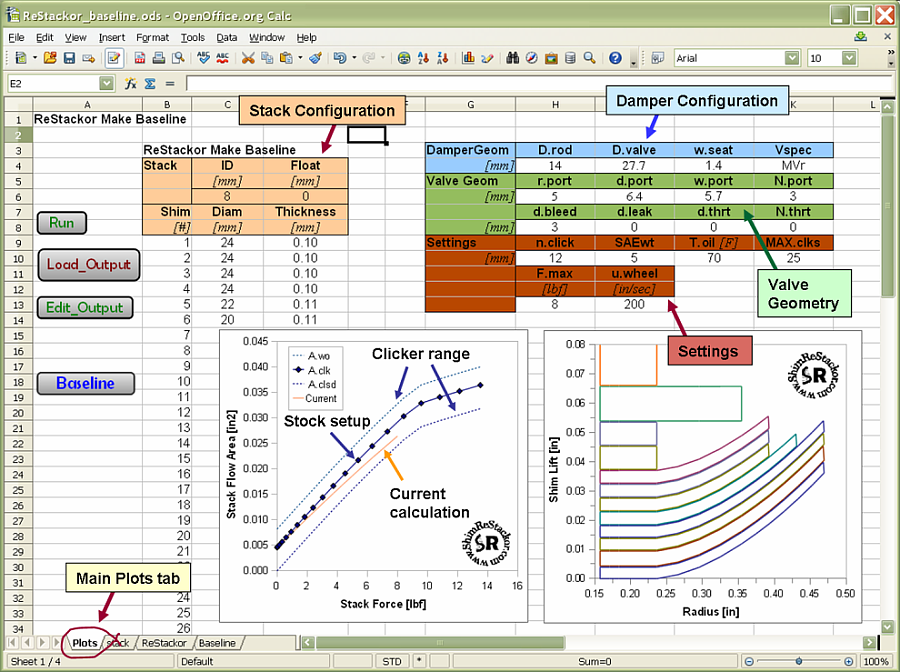
ReStackor uses simple geometric inputs you can easily measure in your garage to setup the calculations for anything from a mountainbike to an MX suspension setup. ( User Manual )
The above snap shot of the ReStackor spreadsheet shows the entire input file, there are four sections:
-
Stack configuration: Lists the diameter and thickness of each shim in the stack.
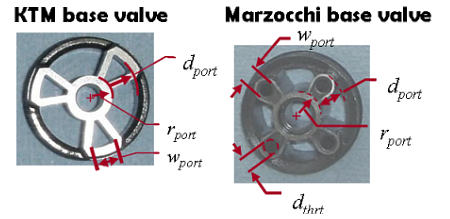
-
Damper configuration: The shock absorber valve and damper rod diameter.
-
Valve geometry: Eight parameters describing the valve port and bleed circuit dimensions.
-
Settings: The shock absorber shaft speed, clicker setting and oil viscosity.
Test,
experiment, tune and modify each feature of the shock.
Learn the influence of each shim in the stack on damping performance and tune the
shim
stack structure to control damping force across the entire range of suspension
speeds.
Graphical outputs make it easy to understand the effect of each modification
and the effect on low and high speed damping. Visualizing the
effect
of
modifications
over the entire range of suspension velocities helps to
eliminate unexpected side effects where the suspension suddenly becomes overly stiff at
high speed or blows through its stroke on large
hits. Download the ReStackor demo to test the code for yourself. ( ReStackor demo ).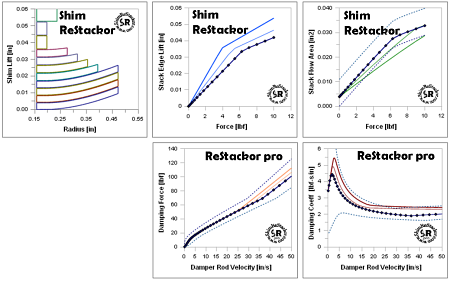
Simple geometric inputs.
Intuitive graphical outputs.
Tune the shim stack in terms of clicker settings and forces you can actually feel when riding.
Test, tune, learn, experiment and modify ALL tunable features of your shock.
Simple inputs - thorough analysis - practical results. The graphical spreadsheet environment of ReStackor gives you the capability to setup, tune and refine your suspension far beyond the limits previously possible.
Thorough Analysis
Shim Stack Calculations
The 14,000 lines of ReStackor source code have been specifically designed to accurately evaluate the stiffness of complex shim stack structures and accurately compute shock absorber damping performance using simple geometric dimensions of the shim stack and valve port geometry. The ReStackor FEA force balance solves 5,000 simultaneous equations to resolve the axial and radial forces in the stack structure, determine the stack bend profile and the flow area at the shim stack face. ReStackor computes the stiffness of complex shim stack structures with multiple crossover gaps, backing shims, stack taper and accounts of variations in shim thickness through the stack.

Effects of adding shims to the stack are easy to compute with Shim ReSackor. Referencing stack stiffness in terms of clicker settings provides an instant intuitive reference for tuning the stack in terms of forces you can actually feel when you ride.
_______________________________________
Fluid Dynamic Calculations
The physics based fluid dynamic models of ReStackor account for entrance losses, valve port turning losses, skin friction, stack face jet impingement, valve port exit loss, stack edge loss, viscous flow losses at low suspension speeds and jet turning losses at high speed. Physics based fluid dynamics gives ReStackor the capability to tune valve port geometries, compute damping force as a function of wheel speed, evaluate the effects of oil viscosity changes on low speed damping and tune stack preload on digressive suspension valves with predictable results. ReStackor pro can tune shim stacks to produce a specific damping force, design valve port flow restrictions to control damping at a specific suspension velocity and tune crossover gaps to close at a specific suspension velocity or retune the shim stack to match a specific clicker setting.
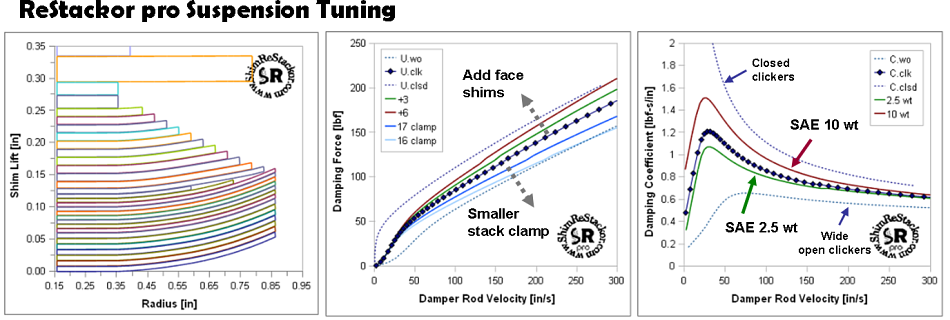
The fluid dynamic calculations in ReStackor pro allow damping force to be directly computed as a function of wheel velocity.
FEA stack structure analysis and physics based fluid dynamics gives ReStackor the capability to develop sophisticated suspension damping profiles defining a new era in suspension tuning.
Practical Results
Clicker Map: A simple clicker map will show you the damping force curve of your current suspension setup, the change in shape of the damping force curve with changes in clicker settings and the influence of basic tuning parameters on the ride, feel, performance and behavior of your suspension.
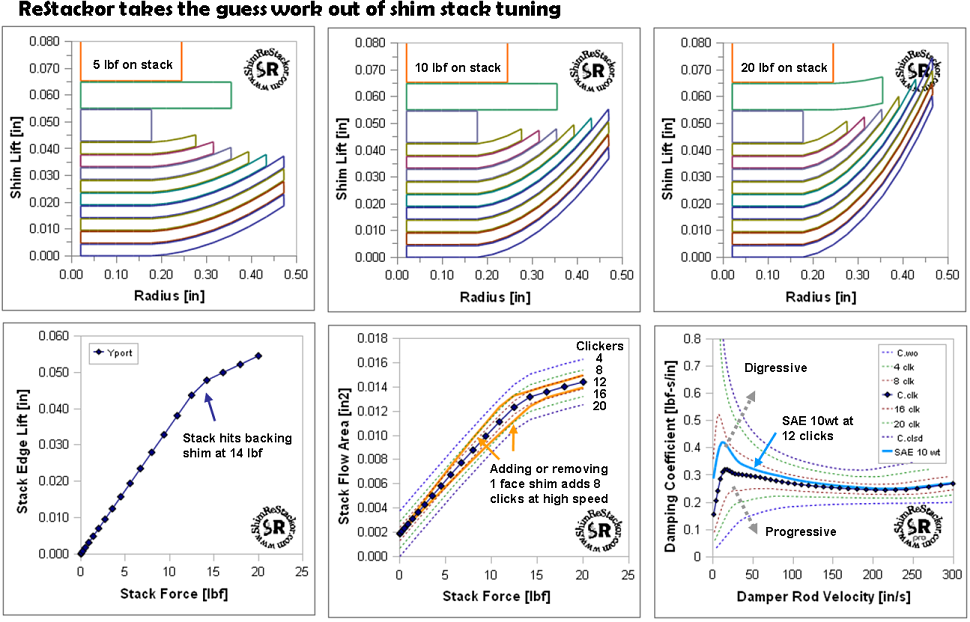
Crossover Gaps : Motocross suspensions are setup for landing big jumps on groomed tracks. Creating a trail bike or a good woods suspension setup out of a motocross bike requires softening the low speed damping to get compliance to roll over trail trash and gain traction under slick riding conditions. ReStackor quantifies the size, position, thickness and diameter of crossover shims needed to achieve a specific change in clicker settings at a specific suspension velocity.
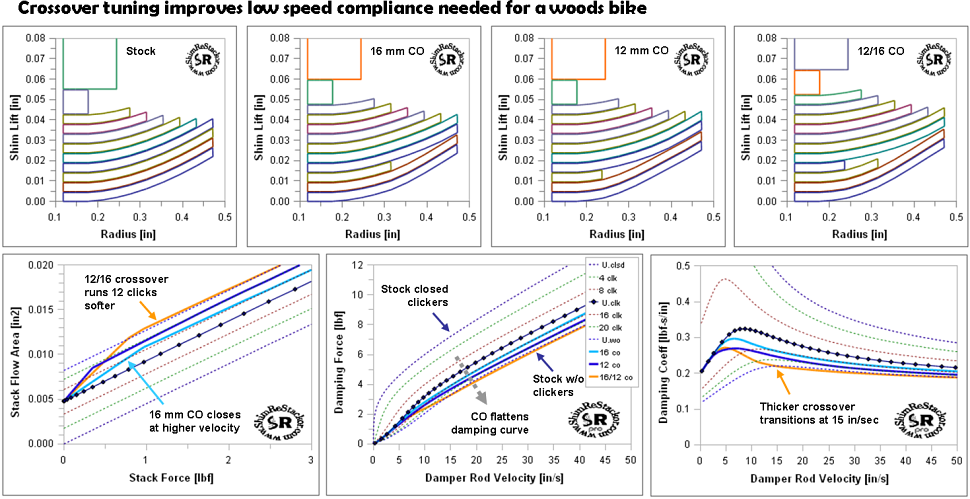
Valve Port Geometry: Taking an MX bike off the groomed tracks into the real world of desert riding requires opening the valve ports to get the high speed suspension action needed for a desert suspension setup. ReStackor pro computes the suspension velocity where the valve ports limit flow, the port flow area needed for a high speed suspension system and the shim stack modifications needed to maintain bottoming resistance while providing adequate whoop performance.
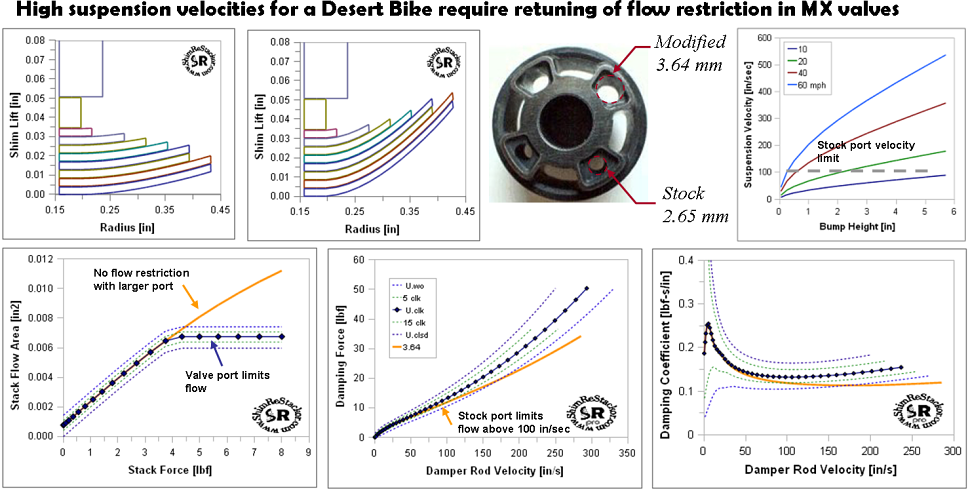
Stack Preload: Motards and GP suspension setups need stiff low speed damping to control chassis motions and provide the track feedback needed for high speed handling. ReStackor can tune the shim stack preload of valve face lips or ring shims to control the magnitude, width and transition into and out of the low speed damping region to tune the performance of the system.
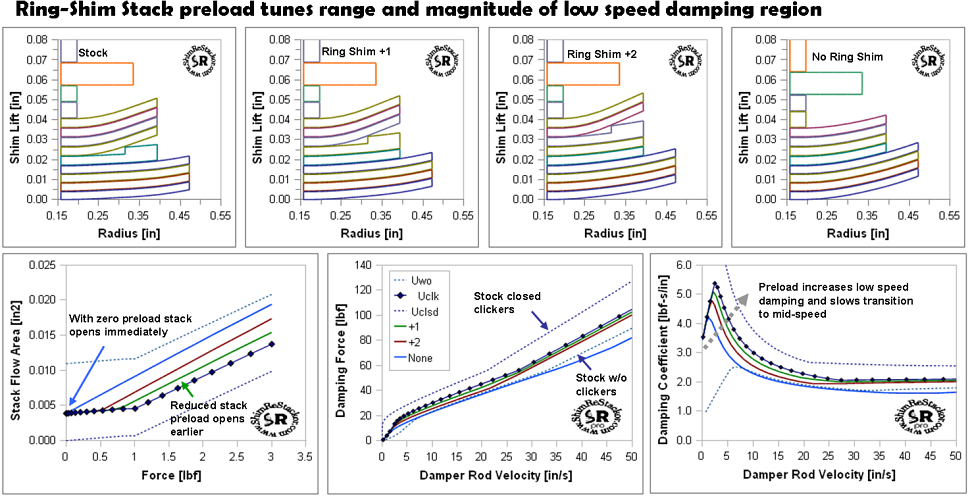
Mid-Valve Tuning: The stack stiffness and float of mid-valve shim stacks can be tuned to control bottoming resistance. Stiff mid-valve stacks and low values of float can cause the rebound chamber to cavitate. The loss of rebound damping from cavitation allows the fork to pop back to the top of the stroke producing the effect of riding "high in the stroke". Cavitation is a feature until the loss of damping causes the bike to head shake on a high speed corner exit.
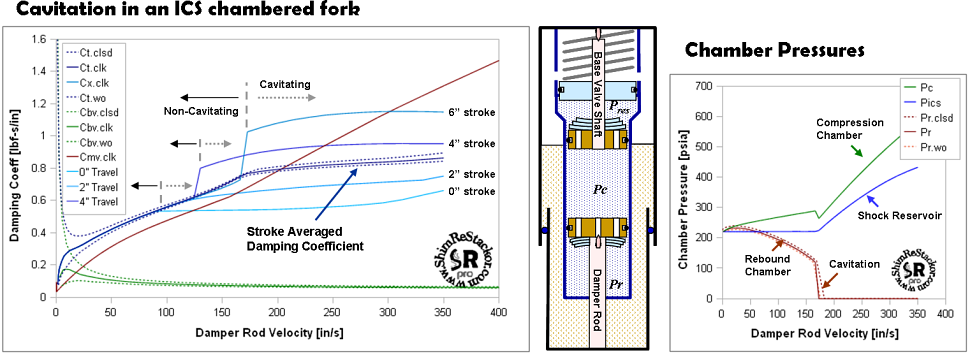
Simple inputs - Thorough analysis - Practical results
ReStackor introduces a new era in suspension tuning
Shim stacks in shock absorbers can be easily modified to change the stiffness of the shim stack structure and damping force produced by the shock. Clamp shims, stack taper and crossovers all have unique influences. Knowing when to change what is a skill professional tuners spend years developing.
ReStackor short-cuts that process. The graphical interface makes it easy to hack around on the shim stack and see the effect of each change in both stack deflection and its effect on damping force. Referencing damping force to clicker settings makes it easy to understand the effect of each change relative to clicker settings and the real-world forces you can actually feel when you ride. That makes tuning a whole lot easier.
Shim ReStackor Buy Now ReStackor pro